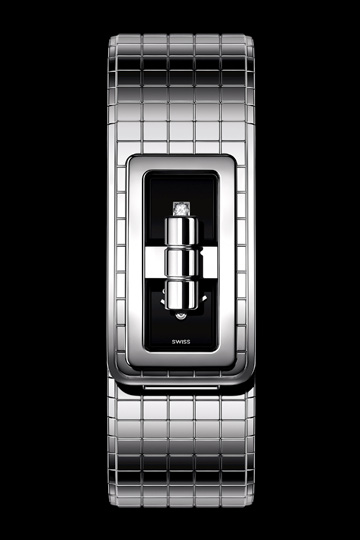WORDS: RUUD VAN SLOOTEN


“It’s actually fairly simple,” says Nicolas Beau, international watch director of Chanel. “What we offer is a creation, and if women find it pleasing – regardless of their age or style preference – then it’ll be a success.” Beau is referring to the fact that, in matters of creativity, Chanel does not allow itself to be led by sophisticated marketing strategies aimed at specific target groups. “The task of our marketing department is to make sure that the watches are in the right place at the right time.”
But as simple as this might seem, it is, of course, anything but. Creating a watch is usually a process that takes many years; especially when it is a completely new model like the Code Coco, which was launched in early October during Paris Fashion Week. The Code Coco also marked the 30th anniversary of Chanel’s horlogerie collection. This meant, of course, that it had to be a creation that linked the visual fashion heritage of Gabrielle ‘Coco’ Chanel and her status as an inventive style innovator.
And it succeeded. The clasp and chequered pattern of the famous Chanel 2.55 bag – named after its date of introduction, February 1955 – were the inspiration for the design of the steel case, which is as ingenious as it is luxurious. The dial can be partially concealed with a quarter turn of the clasp. In this way, Code Coco is transformed from a design watch into a strong, sleek bracelet, entirely in the spirit of Coco Chanel, who liked to integrate masculine elements in her designs for women.
Innovation and simplicity always went hand in hand for Coco Chanel. With her elegant-yet-uncomplicated designs, she wanted to liberate women in the 1920s from uncomfortable, tightly corseted attire. During her long fashion career, she created, among other things, the little black dress and her iconic two-piece suits, but also her famous perfumes, handbags and jewellery. Chanel was always searching for something new and that is still typical of the brand today – including the watch division.
“All options are open as far as that’s concerned,” says Beau. “30 years ago, we began with the Première, a simple quartz model, and we’re currently making a very complex watch like the Monsieur with our own Calibre 1 movement. But in the meantime, we’ve built up the special skills required to do this in house, such as making clasps, cases, bracelets, and expertise in working with gold and precious metals, and even the ceramic design that you see in the J12. And eight years ago, we started to construct and produce mechanical movements, which means we now have all the disciplines of the profession in our own hands.”
For a luxury brand, it is not only a matter of prestige to have unique knowledge, technology and skilled craftsmanship under your own roof – or control – it is a necessity. This is why Chanel acquired an interest in the Swiss manufacturer Romain Gauthier, which produces high-precision parts for movements, in order to secure a solid supply. “What [French embroiderer François] Lesage is to haute couture, Romain Gauthier is to high-end watches,” says Beau. “Specialised, skilled craftsmanship is very important for us as we believe that innovation needn’t always come from advanced technological developments. It’s often the actual mix of old and new techniques. For example, Chanel was the first to introduce embroidery on the dial but you now see it on other brands too. Because we’ve taken over or formed alliances with a number of ateliers and companies with specialised skills, we can use their know-how for all kinds of exceptional applications, which result in very surprising creations. The richness here is in the mix of talents.”
Among the conglomerates such as LVMH, Kering, Richemont and the Swatch Group, Chanel is one of the few independent luxury brands and has been owned by the Wertheimer family for three generations. This independent character is deeply rooted in the company and the mentality of its owners. “That independence is a blessing,” believes Beau. “True luxury is linked to independence. A big enterprise is always looking for economies of scale, the priorities are focused on operating results, profit figures and shareholders’ interests. Their vision of time is different from ours. They look at the short term, we look at the long term. And in the luxury market, the long term is the essence of success.”
Visit Chanel: www.chanel.com